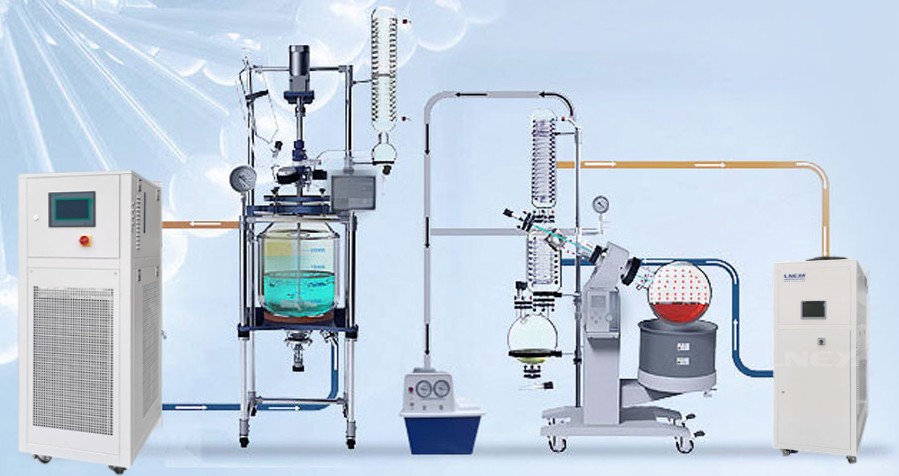Reactor Cooling System Installation — Common Chiller Mistakes to Avoid

- What Is a Burn In Chamber
- Why Chip Testing Needs Semiconductor Chillers
- Semiconductor Chillers in Chip Testing
- Semiconductor Chillers in Wafer Dicing
- 2025年8月
- 2025年7月
- 2025年6月
- 2025年5月
- 2025年3月
- 2025年2月
- 2025年1月
- 2024年12月
- 2024年11月
- 2024年10月
- 2024年9月
- 2024年8月
- 2024年7月
- 2024年6月
- 2024年5月
- 2024年4月
- 2024年3月
- 2024年2月
- 2023年9月
- 2023年7月
- 2023年6月
- 2023年5月
- 2023年1月
空冷チラー チラー チラーズ コールド・アセンブリー・フリーザー 冷却チラー 冷却暖房サーキュレーター 冷暖房システム 動的温度制御システム 冷凍庫 暖房用サーキュレーター industrial chiller industrial freezer 産業用冷蔵庫 jacket reactor 低温チラー news pharmaceutical chiller process chiller reactor chiller reactor cooling reactor cooling heating 原子炉加熱冷却 冷凍サーキュレーター スクリューチラー 半導体チラー 半導体テストチラー スンディ TCU 温度調節 試験室 サーモスタット 超低温チラー 車両試験用冷凍機 ウォーターチラー 水冷チラー
Is the reactor cooling system experiencing unstable temperatures after installation? Is your well-known brand チラー frequently alarming or tripping? Often, these issues stem not from substandard equipment performance but from minor installation errors. Even new equipment can exhibit erratic performance if improperly installed. Have you encountered any of the following common issues when installing a chiller?
Improper Coolant Piping Design
Many users underestimate how piping design affects cooling performance. A pipe diameter that is too small reduces flow, while excessive elbows, long runs, or chaotic routing increase resistance. Some users, for convenience, simply use existing piping. he chiller seems to work fine, yet the reactor cools down very slowly, making it difficult to achieve the desired target. Our engineers’ inspection revealed that the piping design failed to consider the impact of flow rate and velocity on cooling efficiency.
We therefore recommend prioritizing the use of materials and pipe diameters recommended by the chiller manufacturer when planning piping, minimizing elbows and shortening routing.

Insufficient Coolant Filling or Air Entrapment in the Loop
Many first-time users of 動的温度制御システム make the mistake of insufficient coolant filling or air pocket within the system. This can lead to poor system circulation and frequent equipment alarms. If your chiller issues a low flow or high temperature alarm after just a few minutes of operation, or if there’s a significant temperature difference between the inlet and outlet coolant lines, consider whether the air was properly removed during the filling process.
Mismatch Between Chiller Capacity and Reactor Heat Load
When selecting reactor cooling equipment, some users ignore the heat load values calculated by experts and, to cut costs, make rough estimates based on the equipment’s power and reactor capacity. As a result, the chiller fails to reduce the temperature, even at full capacity. In processes with wide temperature ranges, insufficient 冷却能力 can prolong reaction times and affect product cooling. Therefore, heat load assessments from chiller suppliers are crucial.
Improper or Missing Grounding
Chillers are high-power industrial equipment with complex internal electrical systems. Without reliable grounding, the risk of leakage and electromagnetic interference is magnified, potentially leading to more serious consequences. Some projects have poor grounding conditions at the installation site, so they choose to directly connect the chiller casing to the ground. However, this practice poses significant safety risks. For the safety of equipment and personnel, the chiller must be grounded.

Improper Installation in Confined Spaces
Many laboratories and workshops are limited in space. To minimize space usage, some people install chillers in corners, under cabinets, or simply in storage areas. This is a common practice. In fact, last week, a customer called our after-sales technician to report that their air-cooled chiller was unable to cool the reactants to the set temperature and frequently displayed over-temperature alarms.
Because it was summer, the technician considered the ambient temperature as too high. However, upon arrival at the site, we discovered that, to save space, the customer had ignored our installation instructions and installed the chiller in a tight, enclosed space under the stairs. This prevented the hot air from being exhausted and instead repeatedly sucked in and blown back onto the condenser, causing the equipment to shut down due to high-temperature alarms soon after startup.
Both air-cooled and 水冷式冷凍機 require ample space for ventilation and heat dissipation. Never expect a device that’s already running hot to cool your reactor.
Skipping Trial Run and System Commissioning
Some customers decline our on-site installation service and opt for an unknown local chiller installation company. As a result, after the installation is complete and the chiller is running normally, they deliver it immediately without performing flow, response, or load tests.
Many problems only become apparent after operation, such as insufficient pump power, large fluctuations in reactor load, and frequent chiller starts and stops. To ensure long-term smooth operation of your equipment, our experts recommend hiring professional installation personnel and conducting no-load and load tests to confirm system stability before officially commissioning.
結論
Only when properly installed can a chiller fully realize its potential and provide stable temperature control for your reactor. Have you faced similar issues during installation? Or are you planning a new project involving reactor cooling?
Contact LNEYA today for technical support and a detailed quote on reactor temperature control systems.
関連冷凍機
お問い合わせ
TEL
EMAIL:
WeChat & WhatsApp:ウィーチャット

ウィーチャットQR

ご質問やお見積りをご希望の場合は、以下のフォームにご記入ください。24時間以内に担当者よりご連絡させていただきます。
 LNEYA工業用冷凍機 メーカー サプライヤー
LNEYA工業用冷凍機 メーカー サプライヤー
















